https://www.youtube.com/watch?v=YcTo0ZM8Iqg
7 Ways to Cook Thai Sticky Rice (with Bonus Hack!) หุงข้าวเหนียว 7 วิธี
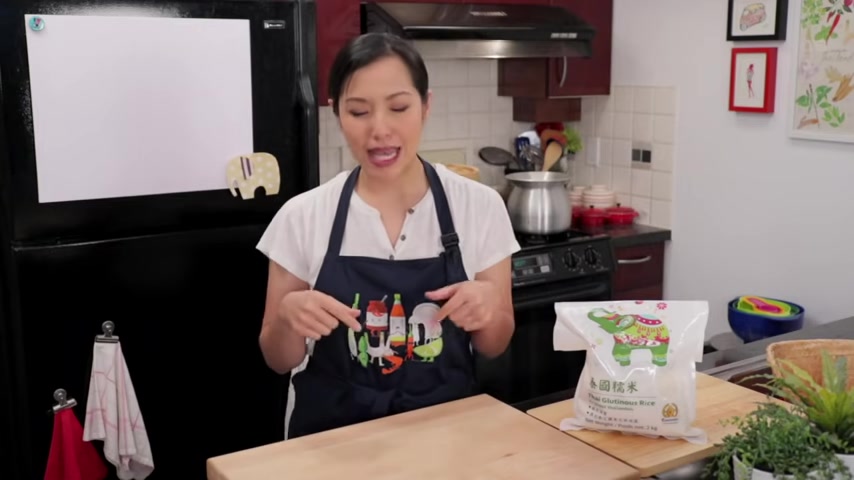
So welcome to Hot Thai Kitchen .
So today , I am so excited to be sharing with you all the ways that I know to make Thai sticky rice .
Now , I've made sticky rice a few different ways over the past several years on the show .
But today I want to do a complete round up a complete guide of seven different ways that you can do it .
Yes , seven .
So it doesn't matter if you don't have this tool or that gadget you don't have time or you have time .
One of these ways is going to work for you before I start .
If you've never experienced the joy of Thai sticky rice or what we call , you have got to try it .
It is so good .
And so Thai sticky rice comes in a bag like this and it's usually labeled glutenous rice or Thai sweet rice , even though it's not sweet .
You wanna make sure that it is from Thailand and the grains are gonna be sort of medium length and opaque .
Let's get started .
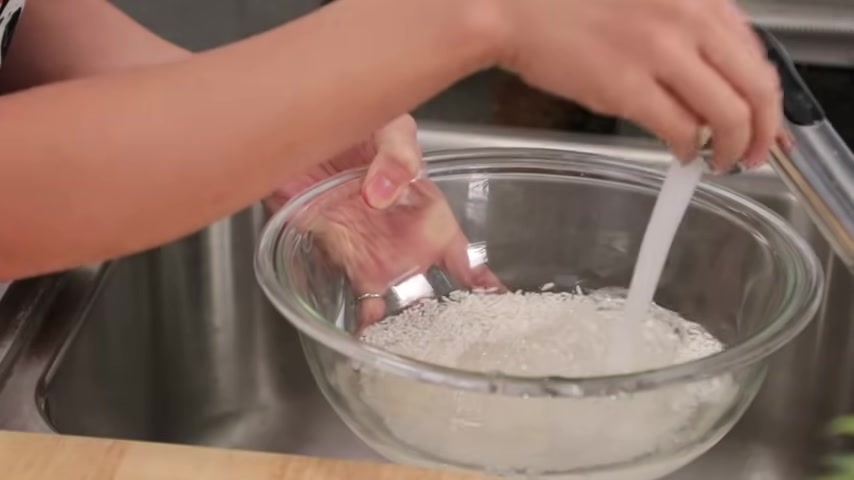
So regardless of which method you choose , the first step is exactly the same for all of them and is absolutely necessary .
And that is washing the rice , you wanna wash out the excess starch that's left there by the milling process and then switch it around pretty vigorously .
So see how cloudy that water is .
If you don't wash it , it would be like cooking rice with a pinch of flour in it .
So you can imagine how that might gum up your rice , right ?
So you wanna rinse that off and do it a few times until the water runs relatively clear .
So now that our rice is washed , let's move on to the cooking methods .
Now , the seven different methods can be divided into two categories , the soak and steam methods and the no soak method .
So let's start with the soak and steam methods because that's the more traditional way .
Mm I just love the smell of rice even when it's not cooking , it smells so good to me .
All right .
So soaking the rice , you just wanna take room temp or cold water .
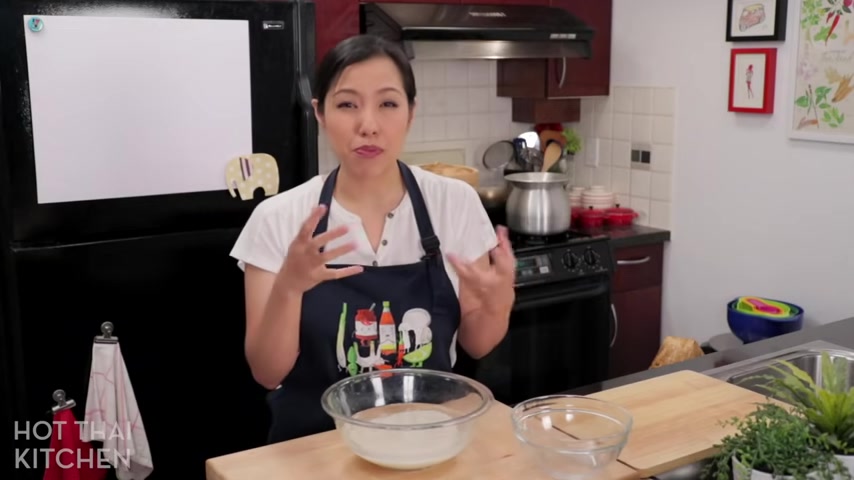
You wanna do this for a minimum , absolute minimum of three hours .
I like to do four because if your rice is old , for example , it might be a little drier , might need a little extra time .
You can do it overnight up to 12 hours .
However , if you go long when you're done , the , the soaked rice will be quite brittle .
So you have to kind of handle it gently when you're going to cook it afterwards .
All right .
Now , if you can leave it out at room temperature , it'll be totally fine .
But if you're nervous and you're gonna go like eight hours , 12 hours , you can stick it in the fridge , not a problem at all .
So the first one is to use a traditional bamboo cone steamer or we call .
So this is made specifically for making sticky rice even though you could steam whatever you want inside of this .
You wanna add just a little bit of , of water in here .
You don't want to add too much because this cone goes in pretty deep and you wanna leave a good amount of space between the water and the cone .
So that when it's boiling vigorously , it doesn't touch the bottom of the rice .
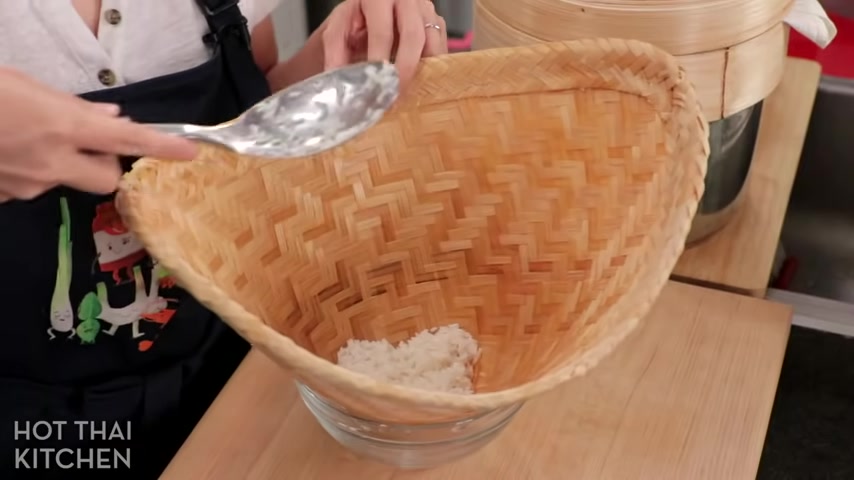
So I would say like 1.5 inch of water is plenty .
And with the bamboo cone , you wanna soak this in water first for like 10 minutes or so just to get it wet so that it will not stick to the rice when it's done .
And the great thing about this method is it doesn't matter how much rice you use .
So you'd have to measure any water .
You don't have to use cups , use finger method nothing .
You just put an amount of rice in there and that's it .
I'm gonna be making a lot of rice today .
So I'm only gonna do a little bit per method .
Otherwise , to have rice out the wazoo by the end of this , if you have a bamboo type lid .
It will be better because this will not condensation will not drip back onto the rice .
But like pot lids are totally fine .
So once the water is vigorously boiling , this goes on top and you put your lid on and it could be this lid and then we're gonna steam this for about 25 minutes , but we're gonna flip it halfway through and I'll show you how that's done when the time comes .
So the rice is kind of partially done .
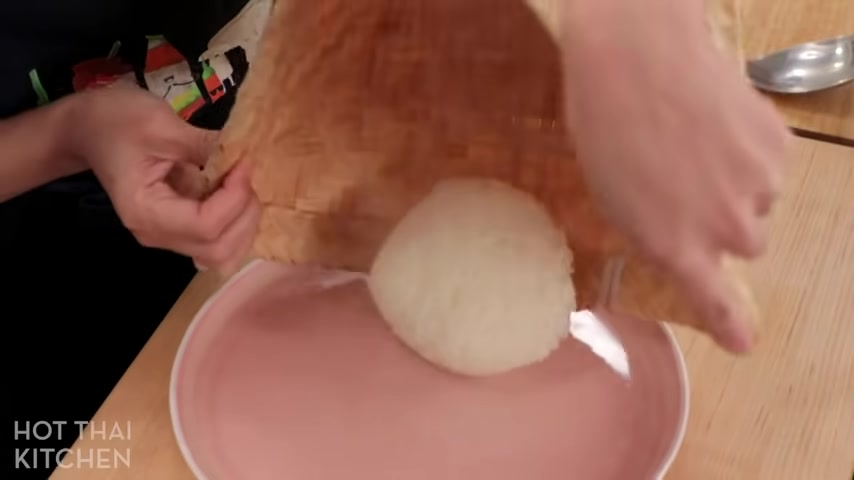
Now , there we go .
Try to like OK , there we go .
Hey , and then we put it back on for another 10 minutes .
And then that is beautifully cooked sticky rice .
You just loosen it up and then roll it onto a plate which is a cute little lump of rice .
Oh my God .
Look how beautifully perfect that is .
Oh , it's perfect .
Look at that .
The grains beautifully intact .
There's no soggy grains anywhere nice and dry .
This is why the bamboo cone steamer is the traditional method .
It really makes perfect rice .
One power tip .
Once you're done with this , you want to get it soaking in water immediately .
There's a little bit of gooeyness from the rice left on there .
If you leave it to dry , it will be impossible to clean off .
So this do not delay the cleaning .

If you don't have a fancy bamboo steamer , any steaming rack will do .
It can be one of these , it could be one of these .
This is a rice cooker insert , actually any steaming rack .
So you're also gonna need some sort of a cloth .
So I use Muslin .
Uh you wanna use natural fiber because it's food , it's gonna be steamed .
You're probably gonna eat some lin .
So you know , you don't wanna use synthetic materials .
You wanna soak this first , which I almost forgot to do .
You wanna get this wet .
Otherwise it will stick to the rice when it's done , which I learned the hard way .
I actually like to do a doughnut trick which means I put a little shot glass or something in the middle and then I put the rice on and then you take the cup out .
Yes , that says Adam's bar .
Adam doesn't actually have a bar .
It doesn't have to be perfect .
Is it makes the rice cook more evenly because I find if you make a big pile , sometimes the middle will be a little bit undercooked .
And this way it'll cook faster too .
And then you wanna make sure you leave space around the edges .
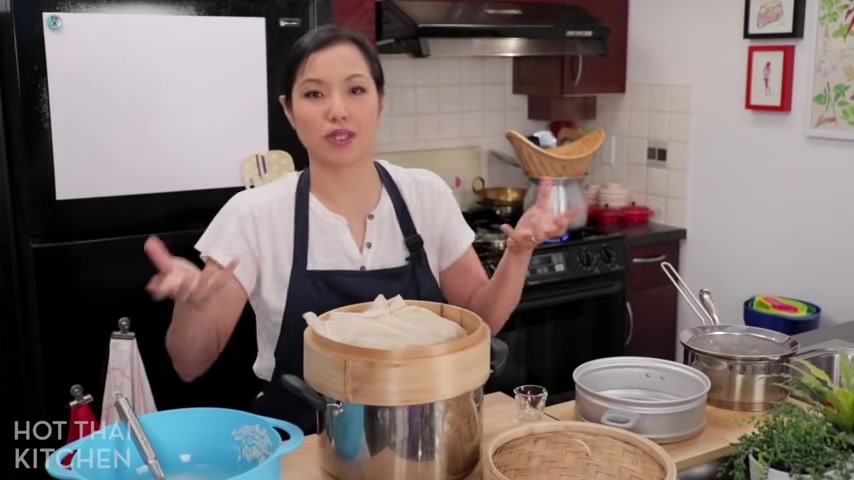
So don't block the entire rack so that you have plenty of room for steam to come up and then you just steam this for again , about 25 minutes , 30 minutes if you're doing a lot .
And with this method , especially with the doughnut trick , you don't have to flip it like we do with the cone steamer .
Careful .
It's hot and the good thing about the S and steam method is you can't really overcook it in a bad way .
Like if you let it go a little too long or whatever , like nothing bad is going to happen .
So it's a really great foolproof method .
Look at a sticky rice doutt , the bottom of the rice where it's touching the cloth can get a little bit gummy .
But I don't find , like , once you fluff it up and mix it in , I don't find that's a big deal at all .
Ha ha ha .
Perfect .
And if you really don't have any steaming implements , you surely have some sort of a sieve .
Ok .
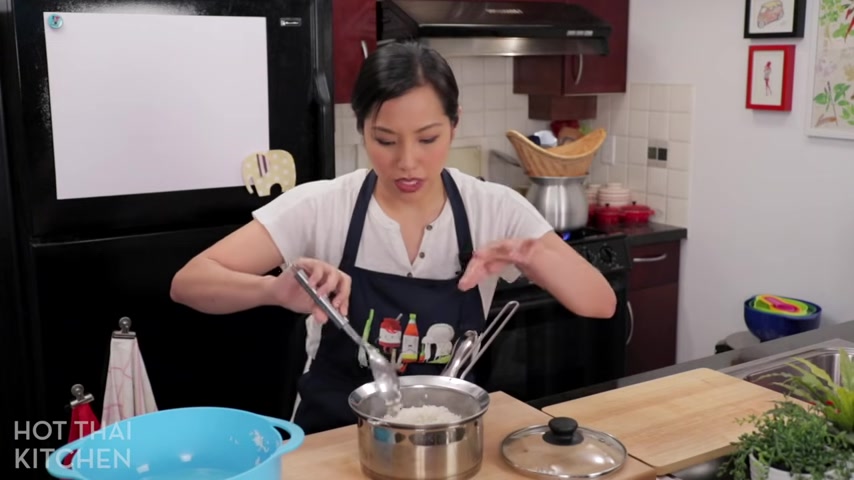
Well , a metal sieve anyway , don't do this with plastic sief .
And again , you put a little bit of water at the bottom , make a little divot on the , on in the bottom .
So that , you know , the rice is more evenly distributed .
Close that up and off , you go to the stove , same deal , plop that a little bit less graceful .
A little bit stuck here on the , just look at the bottom .
Oh , that's not too bad .
It turned out really well .
Sometimes I find this method has a bit of a soy bottom as well , but this one worked out really well .
So there you go three different methods for any kind of equipment .
So there is 1/4 soak and steam method that produces extra soft sticky rice .
And this involves just one little extra step of steeping your soaked rice .
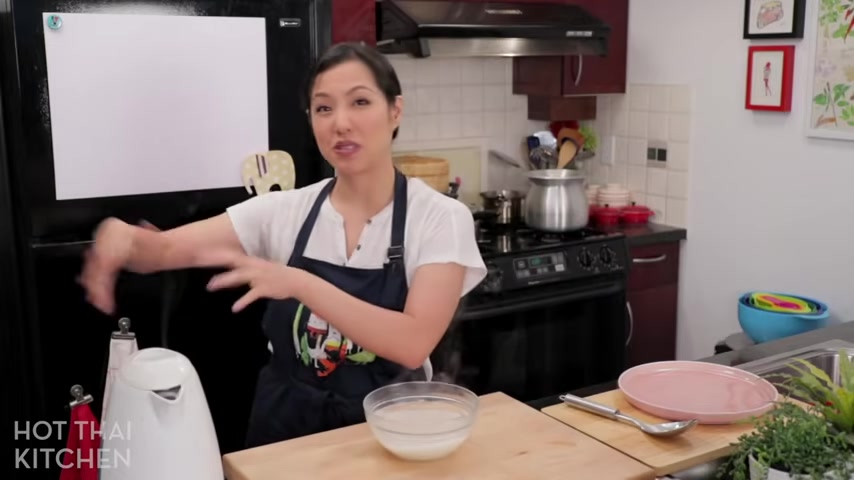
So this is soaked , washed and drained and you just pour off the boil water over it and then you let it steam for about 10 minutes before draining .
And then just steaming as usual .
And you can steam this any way that we discuss .
And this is a really useful method if you know that you're gonna serve this rice at room temp .
So maybe it's like a pot lock where food's gonna kind of be sitting out or a picnic or something sticky rice when you just steam it dries out really quickly .
So this is a really handy method for this .
The rice will stay soft even if it's not warm anymore .
And this works because you're basically forcing the rice to absorb just a little bit more water .
So when it cooks up , it's more tender .
Let's take a look if we can see any difference between the one that's been steeped .

So I don't know if you can see this on camera , but you can , to me it's very obvious that the rice grains are a little bit bigger and it's softer .
I prefer it to be a little bit on the chewier side .
But again , if you're not gonna eat that hot , this is the way you wanna do it because this will not go hard or dry if it cools down .
So at this point , I just wanna touch on why we like to soak and steam sticky rice and not just stick it in a pot with water , like you do any kind of rice .
So the reason is sticky rice can only absorb a small amount of water .
That's why it's so dense when it's cooked , right ?
And so if there's any extra water that it can't absorb , sitting there , it'll turn the rice mushy really quickly .
It's also really sensitive to boiling water .
So if you boil a pot of water , put the rice in the outside will mush before the inside cooks the root .
So by soaking the sticky rice , you allow the rice to absorb all the water that it possibly can .
You take it out of water and then steam it .
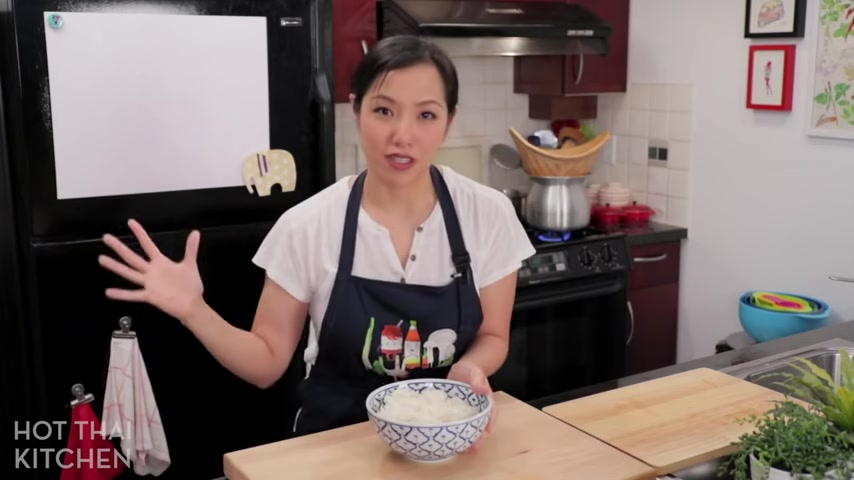
So this way , there's no chance you can overcook it because you can't add too much water to that , right ?
So to look at another way with regular say , jasmine rice , the rice absorbs water and cooks at the same time .
But with sticky rice , you let the rice absorb the water first and then you cook the water that's already in the rice .
Having said that it is possible to cook sticky rice in water .
It's just a little bit trickier .
But these are the methods we're gonna look at next before we move on .
I'd like to tell you about today's sponsor skill share .
So if you like my videos , it probably means that you love to learn new things and you love to create .
So I , I think you're going to love skill share , which is an online learning community with thousands of classes on topics like photography , interior design , cooking classes and even how to build a youtube channel .
Most classes are less than 60 minutes long and they're made up of short lessons .
So even for a busy mom like me , it's easy to just watch a few lessons a day .
And before you know it , you're done .

One class I really like is called easy and Versatile baking .
The one you need to know by Julia T and I like that .
It gives you a really solid foundation for understanding bread baking , which is perfect if you're just getting started .
So if you want to learn a new skill or explore a new passion , check out skillshare and the 1st 1000 people to click the link in my description will get a free trial of skillshare premium membership .
And then after that , it's less than $10 a month for an annual subscription .
So the first No SOK method is what I call the steam , the bowl method .
And I got this idea actually from my mom who used to use it to cook her own personal bowl of brown rice when the rice cooker was busy with white rice .
So what you want is a steamer for this .
But instead of the rack steamer , I just wanna show you an alternative way .
If you have a big stock pot , you can get one of these steamer racks .
You can get at a grocery stores for like a couple of bucks .
Now you can use a regular pot lid , but I like the bamboo lit because then there's no risk of condensation falling into the rice .
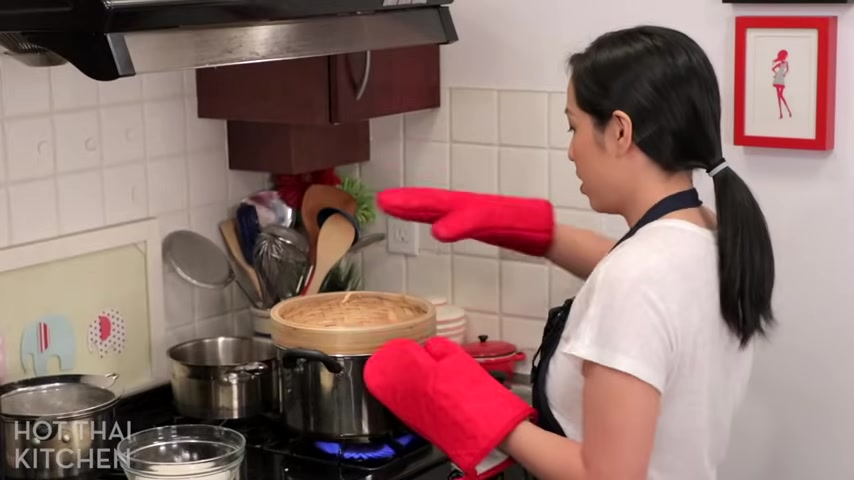
Uh You can also just cover the rice bowl with foil or something .
The rice has already been washed again .
You wanna wash all the rice and drained .
Really , really , really , really well , not just like pour it off .
Yeah , that's good note , you wanna drain and shake and make sure there's no extra water .
And then you wanna add water at the ratio of one part rice to two thirds water .
So less water than rice .
So the water is boiling , I'm gonna um turn it off .
So I don't steam burn myself because I have to put this bowl and this will take a little bit longer .
Oh , so 25 to 30 minutes for this one .
OK ?
So the top of it you can see looks a little bit mushy and the no silk method is always gonna be less ideal than the silk method .
We look at the bottom .
Yeah , it's a little bit softer .
I could probably add a little bit less water to this one .
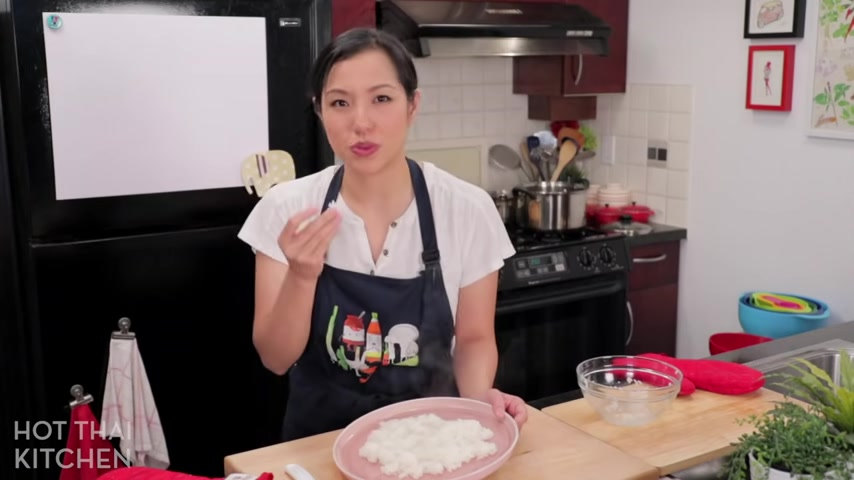
But that's the thing with cooking sticky rice in water is you have to be super precise and not a little bit more .
Or you make the rice a little bit too soft .
The next method is the rice cooker method .
What if you can do it in the rice cooker ?
Why do we bother with anything else at all ?
Well , that's because not all rice cookers can do a good job .
It will work if your rice cooker cooks at a slow and gentle pace .
So I had one years ago that did an OK job with a little bit of crispiness at the bottom .
And then the previous one that I had did not do a good job at all .
But then this one that I have the Zoi Rushi , which I've done a review for um I'll link to that below .
Does a perfect dog .
I was so surprised how well it does and it has a special function for that .
The sweet rice function and sweet is just another term for sticky rice .
You start with washed rice obviously , but you have to drain it really , really , really well , the ratio is the same two thirds part of water going in there .

One very important note , you do not use the sweet rice line in the pot because that is meant for Japanese short grain sticky rice .
If you've got a cooker that has a brown rice function , it might work better .
So try that we choose the sweet function .
And then so this you'll notice takes a quite a long time for that amount .
It takes 35 to 40 minutes .
But that's why it turns out so well .
Because it cooks at such a slow and gentle pace .
Let's take a look .
Oh , the grain looks perfect .
It's almost steamer good .
The bottom of the pot has a , the bottom of the pot has a little bit of like a little bit of like a whiteness , like parts .
That's a little less translucent .
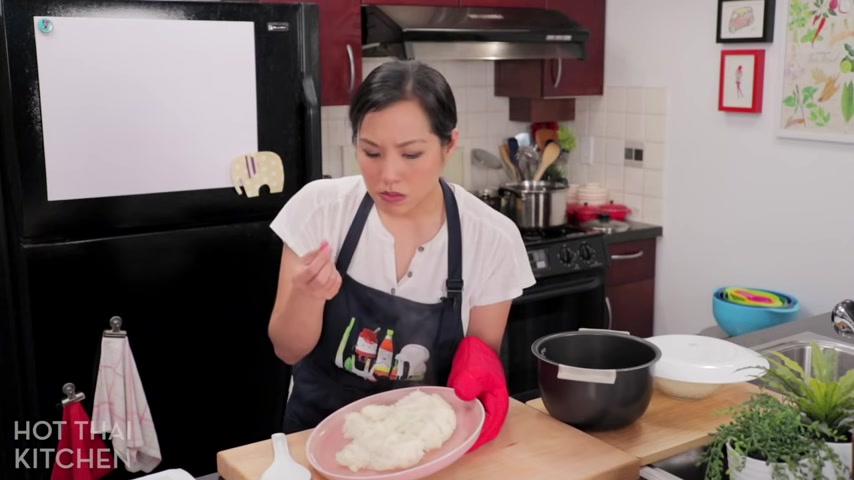
Once you fluff it and mix it in , you can't really tell because it's so slight .
It's pretty amazing .
Like , if you didn't tell me , I thought you just cook this in a steamer .
This rice cooker does a really , really good job .
Mm .
It's a little bit , maybe a little bit softer than the sulk and steam method here .
Adam , what do you think is a tiny bit more moist than the traditional method .
The first method , it's a little bit more dry than the bowl method .
Got it .
Yes .
Yes .
Last and actually at least because this is the least ideal method and that's the microwave .
It works .
But I find it kind of fussy more so than all the other methods .
And also each microwave is a little different .
So this is something you're gonna have to play around with your machine a little bit .
So I've got my rice here , washed and drained and the first thing we're gonna do is we're gonna do a quick soak in hot water .

So I'm just gonna cover it and let it sit at , let it sit for 15 minutes .
It has been 15 minutes .
I'm gonna drain this rice again .
Really ?
Really , really , really , really well .
And then I'm gonna add fresh water at the same ratio of one part rice to two thirds of water .
Now , could I have just measure the water and use that soaking water and just microwave it directly without draining and adding new water .
Yes , you could .
Um , you're probably gonna add , need to add a little bit more water than that .
which I haven't tried .
Exactly .
Here's the trick I have never used this microwave before at my place with a 900 watt microwave .
I do it for three minutes .
Stir .
Two minutes , stir and then one minute and then it's done .
So 321 .
This is an 1100 watts .
So , who knows ?
So I'm gonna do 221 and then see what happens .
You wanna cover it with something .
Some people use saran wrap , but I don't like the idea of microwaving saran wrap .
So a plate will work just fine .

So the rice is gonna be still raw , obviously .
But I'm gonna give it a stir just to redistribute .
Mm .
Looks like it .
This could have also done a three minute initially , but that's all right .
We'll do two more minutes .
Ok .
Oh , that's a lot of steam inside .
Oh , it's looking all right .
You can see that it's dried up a little bit , but you can see some whiteness on the inside of the grain .
So you wanna fold the bottom up to the top .
Ok .
I think one more minute and this should be good .
I think I could use another minute .
So maybe I should have done a 321 after all .
But I'm gonna do a stir .
Oh , but the bottom , the bottom looks good though .
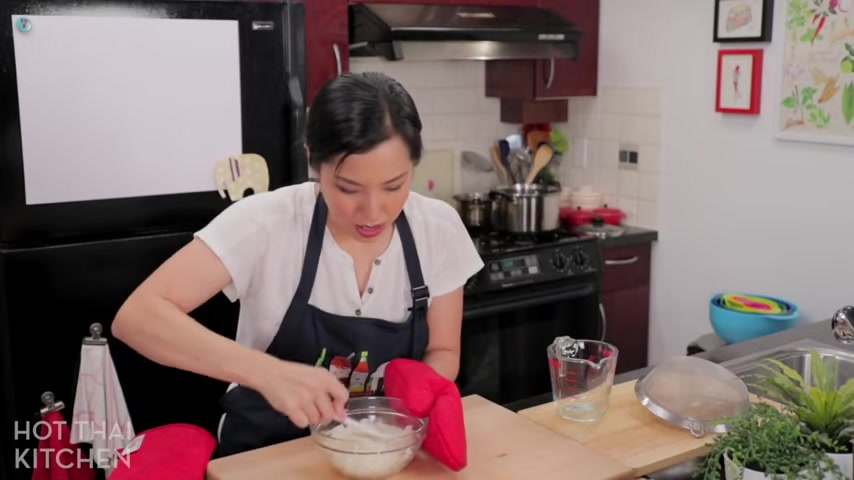
So maybe all it really needs is to just like be stirred and just sit and you know , rest in its own heat .
So this is the microwave rice that's been sitting for a few minutes .
So , let's see .
Hm .
Some reason it's less flavorful than the other rice .
I don't know , the microwave zapped flavor out of it or something .
I don't know .
It just feels that way .
Yeah , I don't like it as much as the uh the one we just did .
I can't explain why .
Honestly , it feels like the outside is softer , like it's not overcooked , but the outside is a little bit gummier .
You're right .
And that goes to show you what I was talking about about the rice really needing gentle heat .
Otherwise the outside will be mushy before the inside cooks through .
But with the microwave it's pretty quick , right ?
It's like pretty high heat in there .
So that's why you get this like sort of gummy situation between the rice grains .
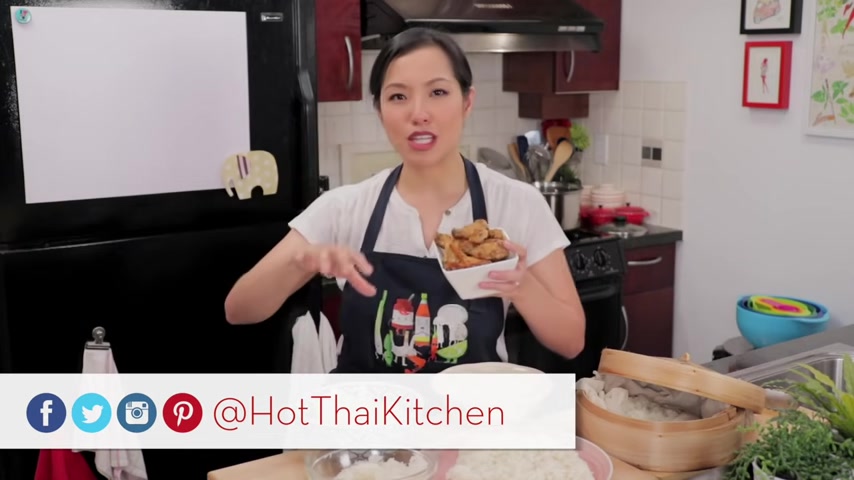
So it's , it's not ideal but it works .
And that is it .
I am now so hungry because I've been making sticky rice all morning and eat nothing of it .
So I'm gonna go and eat sticky rice with these chicken wings , which by the way , sticky rice goes great with wings , with fried meat , grilled meat , anything that you use your hands , skewers of stuff , even Thai salads and you just dip the rice in the salad .
I'll link to some recipes that go well with sticky rice below .
If you have other sticky rice making male that I don't know about .
Please share with us in the comments below and subscribe to the show if you like it and I will see you next time for your next delicious Thai meal with hopefully less sticky rice .
Mm .
Are you looking for a way to reach a wider audience and get more views on your videos?
Our innovative video to text transcribing service can help you do just that.
We provide accurate transcriptions of your videos along with visual content that will help you attract new viewers and keep them engaged. Plus, our data analytics and ad campaign tools can help you monetize your content and maximize your revenue.
Let's partner up and take your video content to the next level!
Contact us today to learn more.